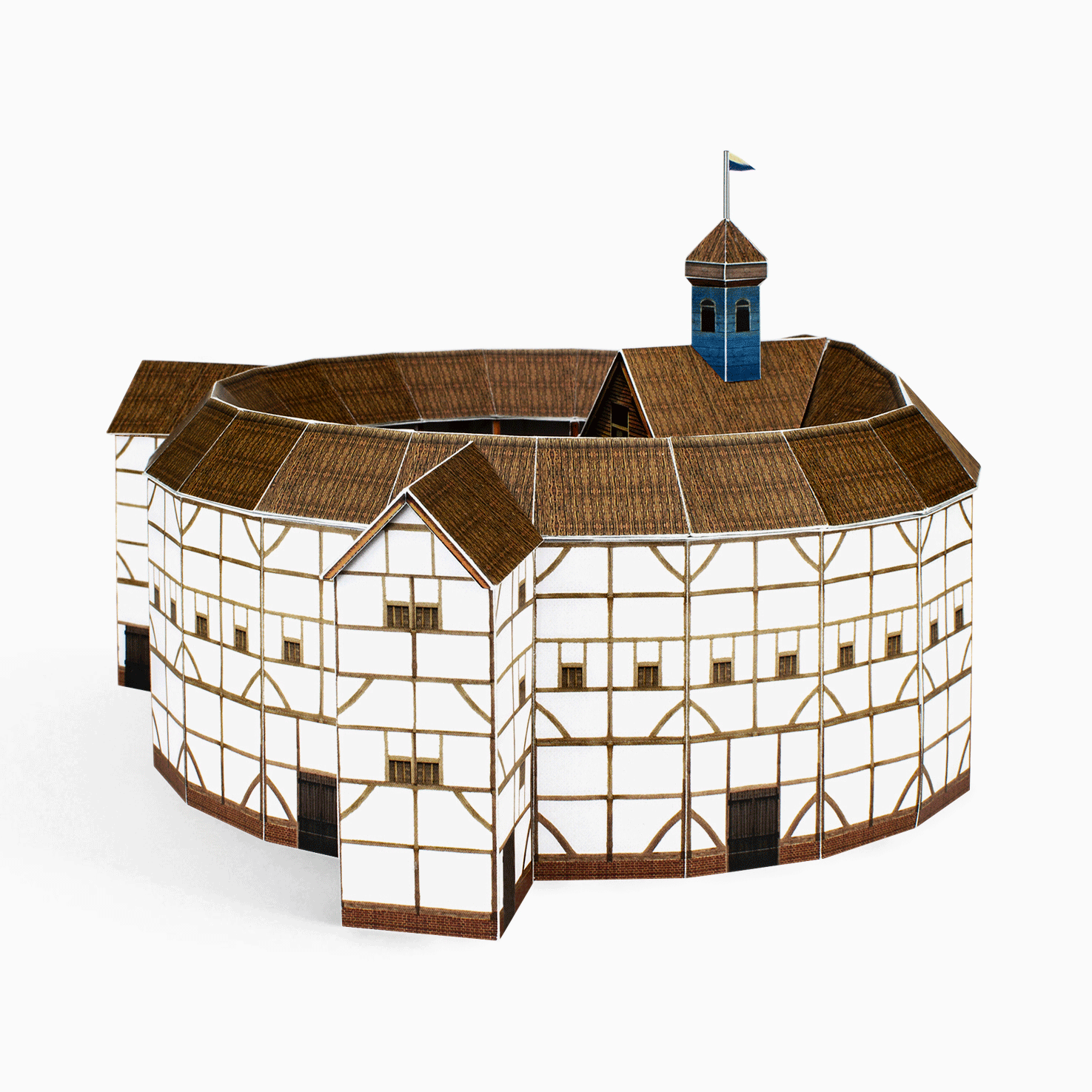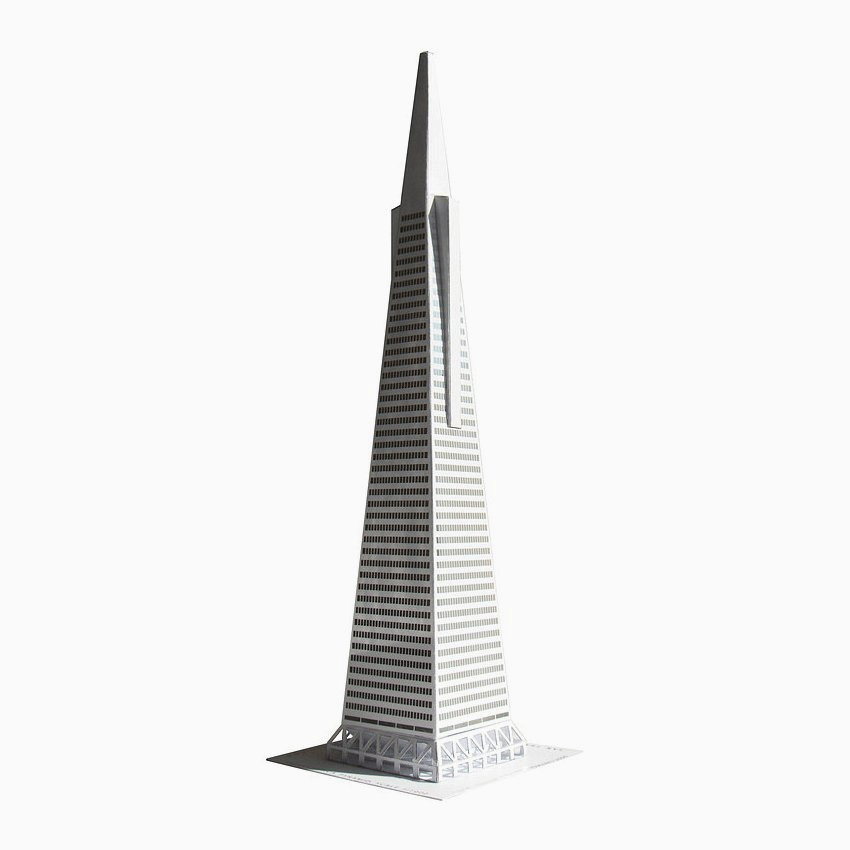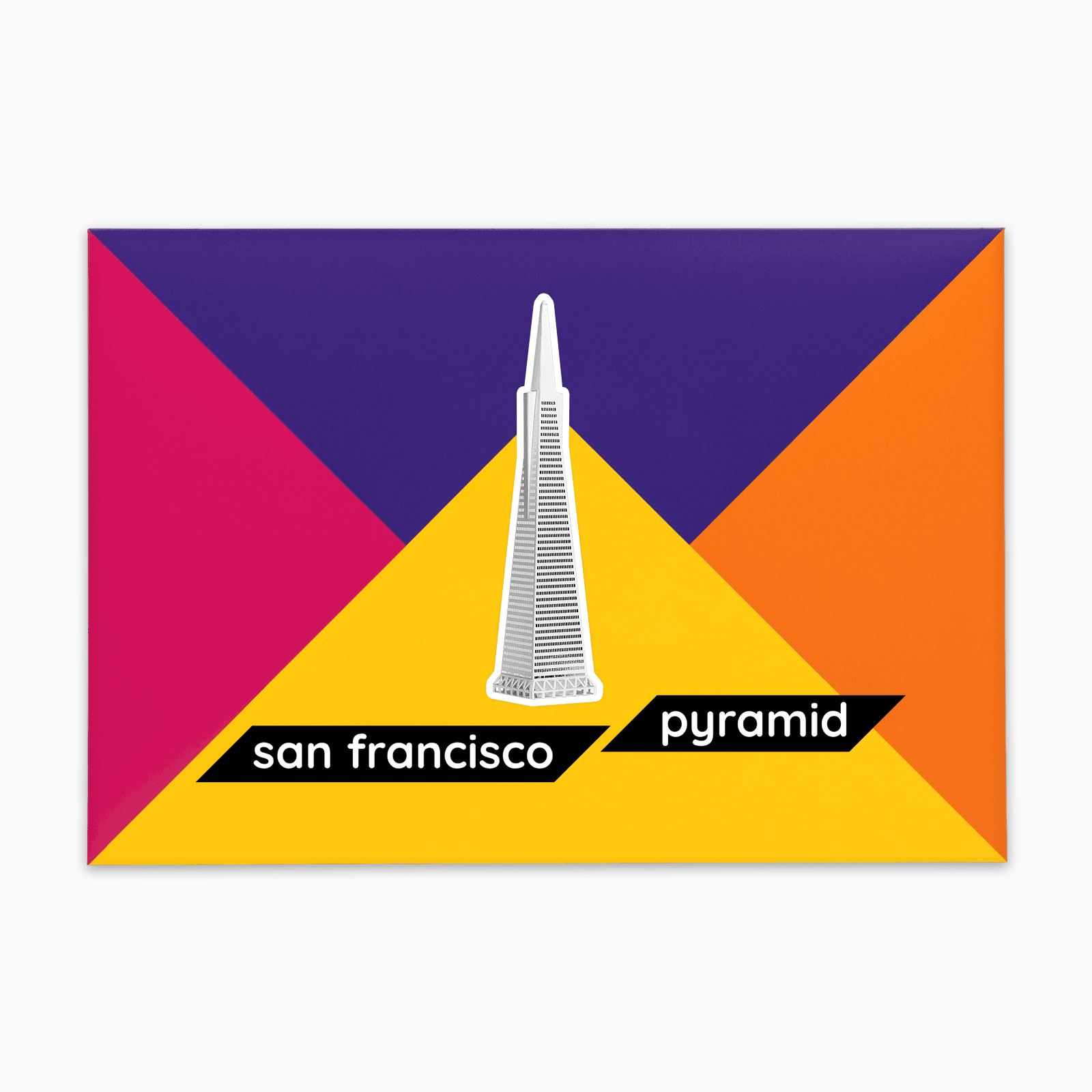Paperlandmarks
San Francisco Pyramid
San Francisco Pyramid
Delve into a captivating crafting endeavor with our paper model kit, enabling you to construct a miniature version of the iconic Transamerica Pyramid. Experience the architectural essence of this eminent skyscraper that defined San Francisco's skyline upon its completion in 1972. The unique design by William Pereira not only introduced a new era of architectural aesthetics but also became an enduring symbol of the city.
- Scale: 1:1000, with assembled dimensions of 3.1 x 3.1 x 10.2 inches
- Assembly Time: Estimated at 1+ hours, potentially across multiple sittings
- Material: Durable, sustainably sourced card; white with silver foiled windows
- Features: 6 pieces to cut out; set-up diagrams included for guided assembly, ensuring a structured crafting journey from start to finish
Couldn't load pickup availability
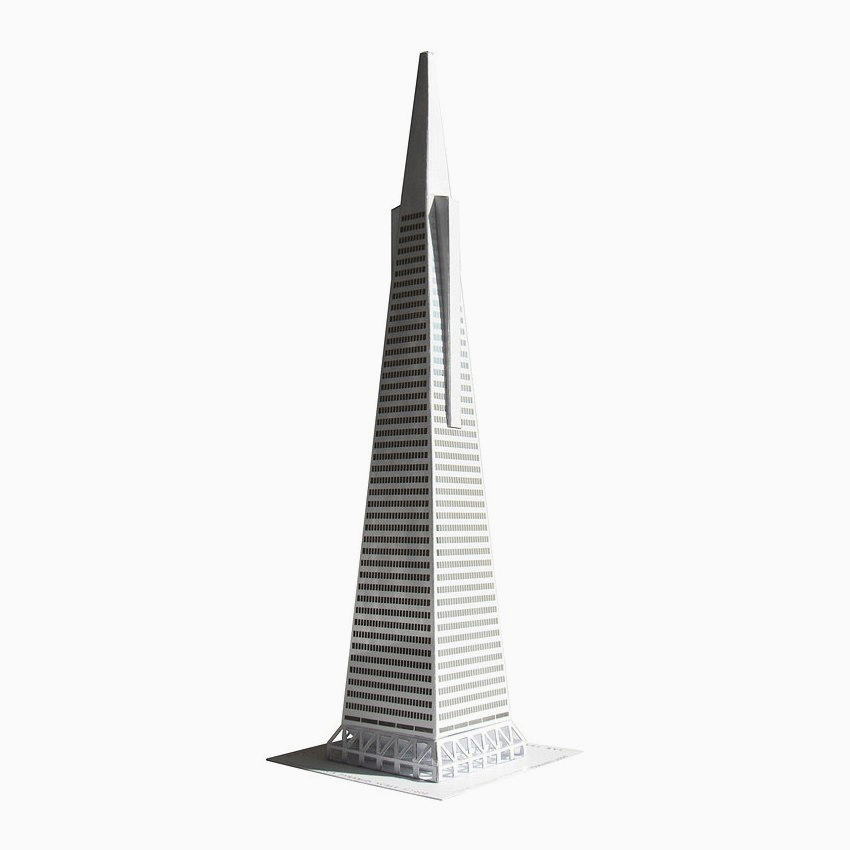
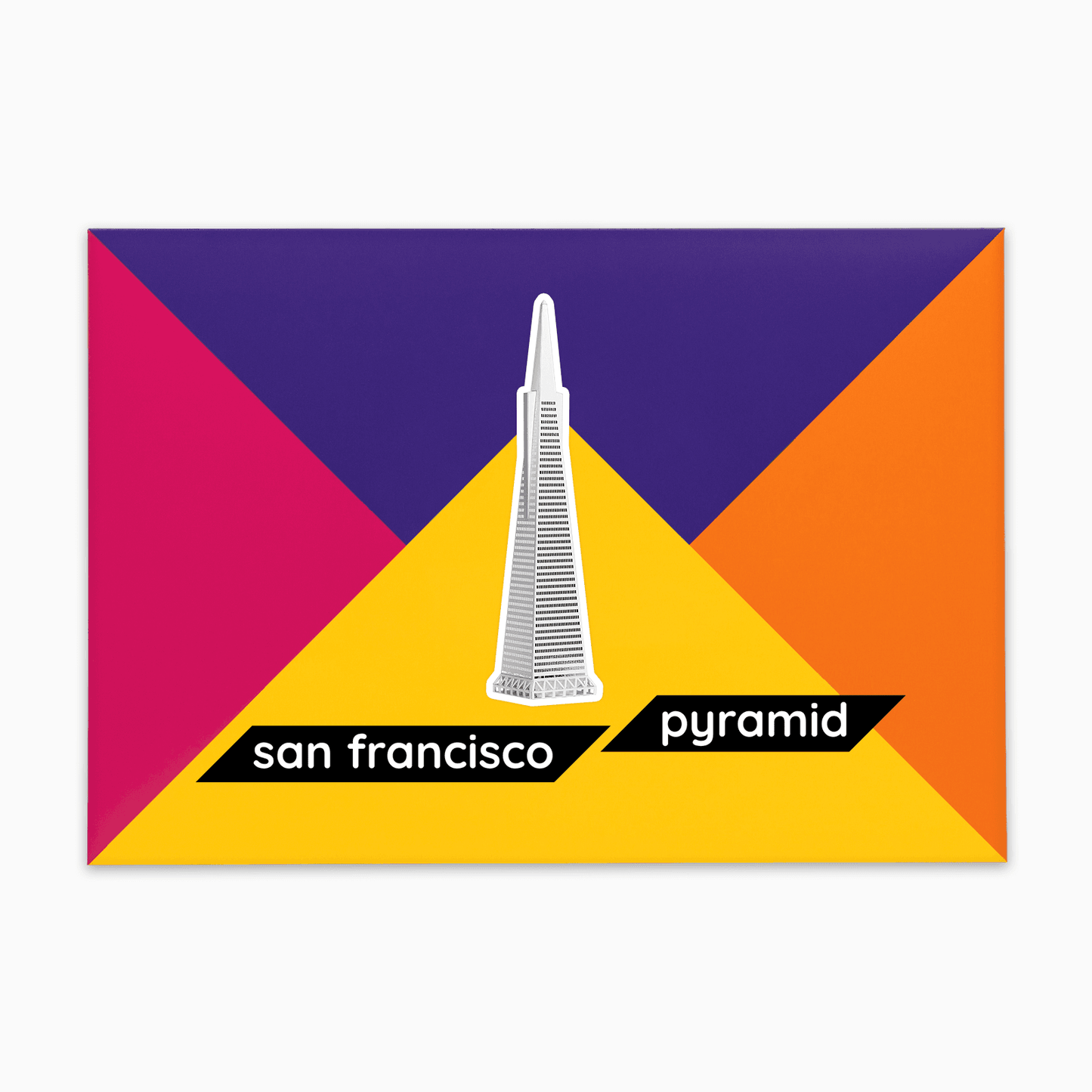
Collapsible content
KIT DETAILS
PRINTED KIT - CUT, FOLD, GLUE! This model comes unassembled, delivered flat-packed in a large envelope.
What's inside? 2 sturdy A4 size paper sheets with the artwork, cutting and scoring lines printed on. You will need to cut, score, fold and glue the parts in order to assemble the model according to the set-up instructions which come with the kit.
Things which are not included, but you'll need in order to assemble the model: time & patience, a hobby knife, a ruler, a cutting mat or hard surface to work on, white glue (PVA). Some other things might be helpful: a pointed stylus, tweezers and scissors. See what tools we recommend.
MEASUREMENTS
- SCALE - 1:1000
- DIMENSIONS (when assembled) - 3.1 ⋅ 3.1 ⋅ 10.2 inches / 8 ⋅ 8 ⋅ 26 cm
- NUMBER OF PARTS - 6
- COLOUR - white with silver foiled windows
- MADE FROM - sturdy card from FSC® certified sustainable sources
- LEVEL - beginner
- ASSEMBLY TIME - at least 1 hour
- KIT CONTENTS - 2 printed sheets, set-up instructions
MODEL BUILDING TIPS
This model will require more than one sitting to build it. We advise to pause between different stages as you work, especially when you come to gluing. The white glue softens the paper and it may lead to misshapen parts if you do not allow them to dry well before proceeding further with assembling. Click here to watch our paper model building tips.
Give yourself enough time to enjoy the process and achieve the best result!
DELIVERY
We ship worldwide from Cheltenham, United Kingdom via Royal Mail, and via express couriers for Express shipping.
We are committed to dispatching your purchases on time, often ahead of the estimated processing timeframe. However, delivery times mentioned below are estimates only and are not guaranteed due to local postal factors.
We ship the next business day. For example, a Special Delivery order placed on Monday will be dispatched on Tuesday and should be delivered by 1 PM on Wednesday.
Please note that the shipping fee is non-refundable.
Estimated delivery timelines and rates:
Domestic orders (UK)
Tracked 48: £2.49, delivery aimed in 2–4 business days.
Tracked 24: £3.99, delivery aimed in 1–2 business days.
Special Delivery: £9.95, delivery aimed by 1 PM next business day, excluding the order day.
Orders over £50 ship free via Tracked 48 service.
International orders
Standard & Tracked: 5–15 business days.
Express: 2–4 business days.
Orders over £50 / $68 / C$94 /€58 ship free via Tracked service.
Orders to US
10% import duty added at checkout. Duties are non-refundable.
Rates from: Standard $6, Tracked $12, Express $40.
Orders to EU
Up to €150 (excluding VAT) – VAT collected at checkout. Over €150 – recipient responsible for import costs, including VAT, duties, and clearance fees.
Rates from: Standard €5, Tracked €8, Express €26.
Orders to rest of the world
Local customs charges may apply and are the recipient’s responsibility.
Rates from: Standard £5, Tracked £10, Express £25.
Delays
Delivery delays are beyond our control. While over 95% of orders arrive within the stated timeframe, delays may occasionally occur, especially during peak periods. If you need your order by a specific date, consider Express shipping.
Read our full delivery information and policy on returns here.
ABOUT THIS LANDMARK
The Transamerica Pyramid in San Francisco, California, is a striking example of modern architectural design. Completed in 1972, it was designed by architect William Pereira and stands as one of the most recognizable landmarks in San Francisco's skyline.
The building features a unique pyramid shape, tapering as it rises to its height of 853 feet (260 meters), making it the tallest skyscraper in the San Francisco skyline for many years. It has a distinctive spire at the top, which is illuminated at night and can be seen across the city. The building's façade is covered in crushed quartz, giving it a light, shimmering appearance.
Originally built as the headquarters for the Transamerica Corporation, it has since become a multi-tenant office building. The pyramid design is not just aesthetic; it also serves a functional purpose. The tapered design allows more natural light to filter down to the streets and provides more space at the base for a pedestrian plaza and redwood trees.
Upon its completion, the Transamerica Pyramid was met with mixed reactions but has since become an integral part of the city's identity.
Reviews
Kushna - ★★★★★
SF model ★★★★★
johnnyboy129 - ★★★★★
★★★★★
Dianaroberts - ★★★★★
Nice kit - my grandson will enjoy it.
Botryoid - ★★★★★
A present for a friend who is obsessed with this building
